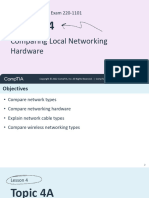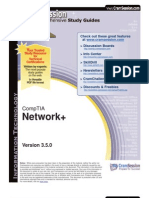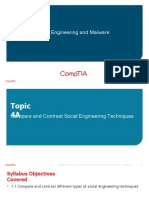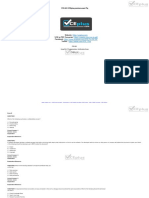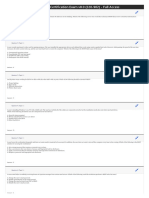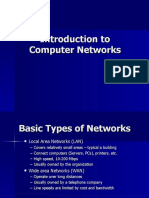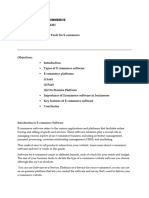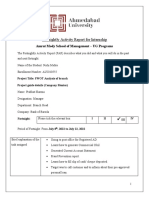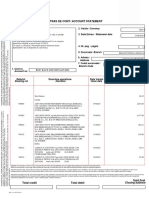0% found this document useful (0 votes)
270 views41 pagesCompTIA A+ Core 1 Lesson 5 PowerPoint Notes
Lesson 5 of the CompTIA A+ Core 1 Exam 220-1101 covers configuring network addressing and internet connections, including comparisons of internet connection types, basic TCP/IP concepts, protocols and ports, and network configuration concepts. It discusses various internet connection methods such as DSL, cable, fiber, and cellular, as well as essential networking protocols like TCP and DHCP. The lesson also addresses the importance of DNS, VLANs, and VPNs in network management.
Uploaded by
desiree97Copyright
© © All Rights Reserved
We take content rights seriously. If you suspect this is your content, claim it here.
Available Formats
Download as PDF, TXT or read online on Scribd
0% found this document useful (0 votes)
270 views41 pagesCompTIA A+ Core 1 Lesson 5 PowerPoint Notes
Lesson 5 of the CompTIA A+ Core 1 Exam 220-1101 covers configuring network addressing and internet connections, including comparisons of internet connection types, basic TCP/IP concepts, protocols and ports, and network configuration concepts. It discusses various internet connection methods such as DSL, cable, fiber, and cellular, as well as essential networking protocols like TCP and DHCP. The lesson also addresses the importance of DNS, VLANs, and VPNs in network management.
Uploaded by
desiree97Copyright
© © All Rights Reserved
We take content rights seriously. If you suspect this is your content, claim it here.
Available Formats
Download as PDF, TXT or read online on Scribd
/ 41

